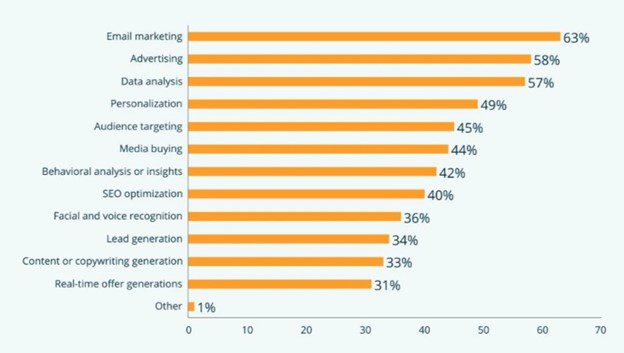Is AI going to replace my role? This question has been creating a fuss all around us for some time now.
However, if you have used AI, you would clearly know by now that AI-generated content, while efficient and scalable, lacked the human touch that connects with readers on an emotional level.
In this blog post, we will explore the importance of bringing a human touch to AI-generated content and discuss strategies to achieve a balance between automation and personalization.
The Limitations of AI-Generated Content
AI is no human. We all know that. Even though AI makes the job easier for us, let’s take a look at what are the specific limitations of AI-generated content.
Lack of Emotional Connection
One of the major limitations of AI-generated content is its inability to evoke emotions. Content that lacks an emotional connection feels sterile and fails to resonate with readers. Emotions play a crucial role in storytelling and communication, making it essential to address this limitation.
Inability to Adapt to Contextual Nuances
AI models often struggle with understanding complex contextual nuances. They may miss subtle cultural references, idioms, or local dialects, resulting in content that may not resonate with specific target audiences. Humans, on the other hand, excel at understanding and adapting to such nuances, allowing for more personalised and relatable content.
Lack of Uniqueness
The content written by AI will always look similar. Humans have the ability to bring their unique perspectives, creativity, and originality to content creation. Each writer has their own voice, style, and way of presenting information, which adds a touch of uniqueness to their work. AI-generated content, on the other hand, lacks this individuality and can often produce content that feels generic and repetitive.

Why is Human Touch Important in Content Creation?
We are humans and most people like us would not be happy about eating food cooked by robots everyday, even if the robot is an expert chef. Similar is the case with AI-generated content.
Here is why human touch important in content creation:
Establishing Authenticity and Trust
Human-generated content adds a sense of authenticity and credibility to the information presented. Readers are more likely to trust content that is written by humans who demonstrate expertise and empathy.
A human touch brings an element of personal experience, expertise, and understanding that resonates with the audience. This authenticity builds trust and strengthens the relationship between the reader and the content creator.
Engaging with Emotions
Emotional engagement is a powerful tool in content creation. By infusing emotions into content, such as humour, empathy, or storytelling, writers can create a lasting impact on readers.
Emotionally engaging content triggers a response, forging a connection between the reader and the message conveyed. This connection not only captures attention but also fosters a deeper understanding and resonance with the content. AI can never bring in personal life experiences or stories to the content it writes.
Tailoring Content to Target Audiences
Every target audience is unique, with distinct preferences and needs. By incorporating a human touch, content creators can customise their message to resonate with specific audiences. This personalization leads to higher engagement, better conversion rates, and a stronger bond between the reader and the content.
Humans have the ability to empathise, understand the audience’s pain points, and craft content that directly addresses their needs, resulting in a more meaningful and impactful experience for the reader.
How to Add a Human Touch into AI-Generated Content?
Even if you are using AI, you can add a human touch to it to make it more resonating with the mind of the reader. Here are some tips:
Collaborative Content Creation
Do not let AI write all the content! Combining the capabilities of AI with human creativity can result in content that blends efficiency with authenticity. Encouraging collaboration between AI tools and human writers can produce high-quality content that leverages the strengths of both. AI can assist in generating initial drafts, while humans add the necessary emotional elements and context.
Human Editing and Review
While AI can generate content, human editing and review are essential to ensure the final output meets the desired standards. Human editors can refine the AI-generated content, adding personalization, emotional elements, and fine-tuning the language to align with the target audience. This process ensures that the content is relatable, authentic, and emotionally impactful.
Incorporate Real-Life Examples & Stories
Human experiences and anecdotes bring content to life, allowing readers to relate and connect with the message on a deeper level. Integrating real-life examples and stories into AI-generated content enhances its appeal and makes it more engaging.
Humans can draw from their own experiences or conduct interviews to gather relevant stories that resonate with the audience.
Leverage User Feedback and Interaction
Listening to audience feedback and engaging in conversations can help content creators understand the needs and preferences of their readers. Incorporating user feedback and interaction into the content creation process ensures that the final output resonates with the target audience. This iterative approach allows for continuous improvement and strengthens the human touch in content creation.
Inject Personal Insights and Perspectives
One way to infuse a human touch into AI-generated content is by adding personal insights and perspectives. Human writers can share their own thoughts, experiences, and opinions on the topic being discussed. This not only adds a unique viewpoint but also allows readers to connect with the writer on a more personal level. By sharing personal insights, writers can engage readers in a meaningful conversation and foster a sense of community.
Add a Human Narrative
AI-generated content often lacks the narrative structure and storytelling elements that humans naturally incorporate. By adding a human narrative, content creators can create a compelling and engaging piece, making it more memorable and impactful. This could involve introducing characters, creating a storyline, or following a narrative arc that captures the reader’s attention.
Emphasise Empathy and Understanding
Empathy is a fundamental aspect of human communication. By infusing empathy into AI-generated content, content creators can connect with readers on an emotional level. Understanding the pain points, challenges, and aspirations of the audience allows writers to address their needs with compassion and offer solutions that resonate. This human touch of empathy creates a sense of trust and authenticity, fostering a stronger bond between the reader and the content.
Cultivate a Distinctive Voice and Style
Every writer has a unique voice and style that sets them apart. Content creators can leverage this by infusing their own personality into AI-generated content.
By cultivating a distinctive voice and style, writers can create a recognizable brand identity and establish a loyal readership. This personal touch adds a layer of familiarity and connection, making the content more relatable and memorable.

The Future: AI as an Aid, Not a Replacement
AI-generated content is not meant to replace human creativity and expertise but rather to enhance and streamline the content creation process.
By embracing AI as a tool, content creators can focus on adding value through personalization, emotional connection, and contextual understanding.
The future lies in striking a balance between the efficiency of AI and the human touch that brings authenticity, empathy, and creativity to content.









